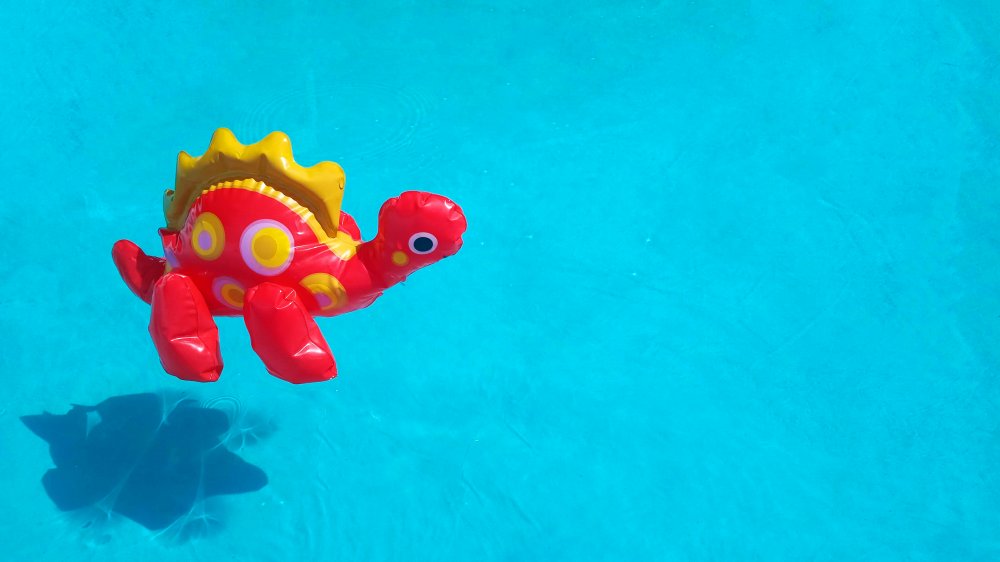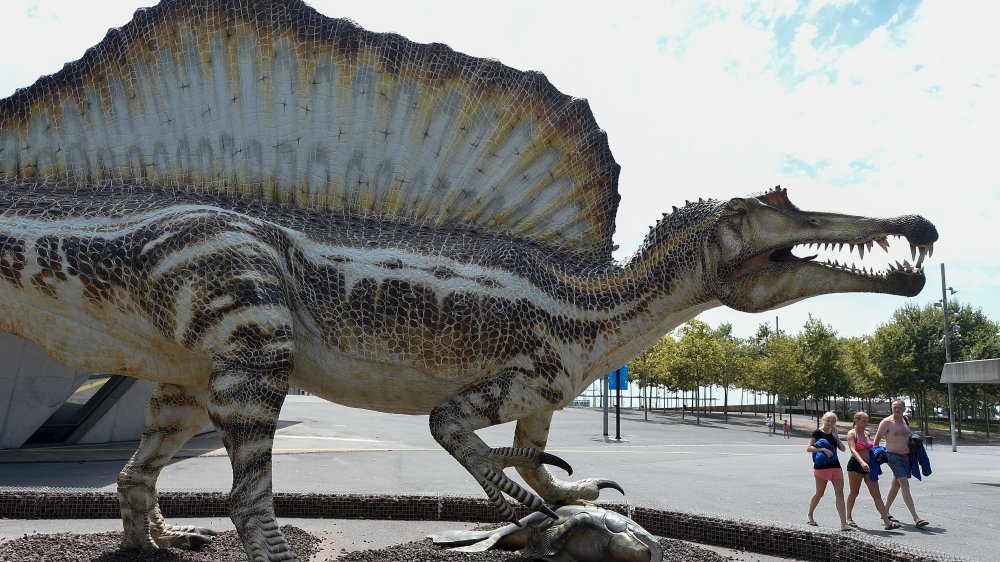The Untold Truth Of The Spinosaurus, World's First Known Swimming Dinosaur
Paleontologists will break your heart. They've been doing it for decades. One minute, you think that you love dinosaurs: they're giant, ferocious dragon beasts with thick, scaly hides and a taste for Ford Explorer tires. Then boom — along comes Professor Buzzkill from the University of Suck It to let you know that ac-tu-a-lly, velociraptors were the size of a turkey, the Tyrannosaurus Rex was a scavenger, the dilophosaurus didn't have Dino-Strike Venom Spray™, and every last one of them had more feathers than the amphitheater HVAC filter after an Elton John concert.
All of which is a decent introduction to the fact that, according to LiveScience, the Spinosaurus, which was once thought to be a land-dwelling carnivore nearly worthy of its own John Williams theme, was probably all about that beach life. Tail bones discovered in late 2018 have pointed researchers to the conclusion that this creature was all about taking a refreshing dip, and now all of your Jurassic Park III notebooks are even more out of date.
And the mayor of Amity still won't close the beaches
It is an unfortunate but little-discussed fact that paleontology has always been a guesswork-heavy science. Finding the fully preserved fossilized remains of a dinosaur is beyond rare, despite what Animal Crossing has to say on the matter. Most of the time, researchers only have a few fragments of a creature's body and they build their best guess as to what the rest looked like based on the best information available. Ever seen an Erlikosaurus in a museum? Everything besides its skull, foot, and humerus is, from a scientific standpoint, somebody's hunch. The Hadrosaurus? We've got 35 of its bones on record.
And then new information comes along, and our entire understanding of a species gets thrown for a loop. In this case, the newly discovered paddle-like tail structure of the Spinosaurus has completely changed the way that scientists view sauropods, undoing the theory that they avoided the water. It's now believed that they were adept hunters on land and underwater.
The discovery came as part of an exploration of Morocco's Kem Kem region, a dig site described as once being "the most dangerous place in the history of planet Earth" for its vast array of predatory dinosaurs.

